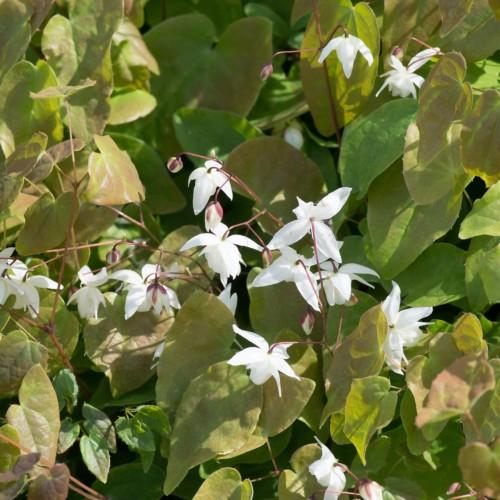
bishop's hat
Epimedium diphyllum
Cycle:
Herbaceous Perennial
Watering:
Minimum
Hardiness Zone:
5 - 8
Flowers:
Flowers In Spring
Sun:
Part shade,full shade
Leaf:
Yes
Growth Rate:
Low
Maintenance:
Low
Salt Tolerant:
Yes
Care Level:
Medium
watering
It is important to provide Bishop's Hat with the right amount of water as it is a moisture-loving plant species. Watering should be done regularly and carefully, depending on soil type and temperature. If the soil is dry or hot, water more often; if the soil is cooler or wetter, reduce watering. During the summer months, Bishop's Hat should be watered deeply at least once per week, and more often if the soil is dry or temperatures are high. During the winter months, water should be reduced to every 2 weeks or even less, depending on the temperature and soil moisture level. Make sure to keep an eye on the soil moisture level, as overwatering can cause root rot. Check the soil around the plant every few days in order to determine when to water. A soil moisture meter can be helpful in ensuring the proper amount of water is applied.
sunlight
Bishop's hat (Epimedium diphyllum) prefers part to full shade, with the ideal amount of sunlight being 4-6 hours per day, either morning or evening sunlight. While the plant will tolerate full shade, it is important to remember that it needs certain amounts of sunlight for photosynthesis and growth. Too much sunlight can cause the leaves to become scorched and the flowers to fade. Too little sunlight can lead to spindly or pale growth.
pruning
Bishop's hat (Epimedium diphyllum) should be pruned twice a year. The first pruning should occur in late spring, when the new growth starts to emerge; this is when the plant should be trimmed down to about 6 inches from the ground and any dead or diseased stems should be removed. The second pruning should take place in late summer/early fall and should involve removing any excess growth and dead foliage. Pruning the Bishop's hat regularly will help maintain an attractive, compact and manageable shape while also helping to keep the plant healthy.
